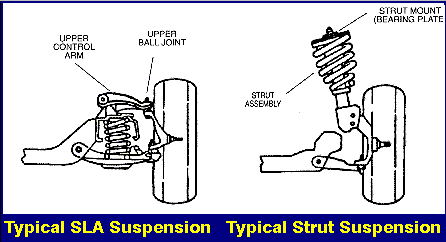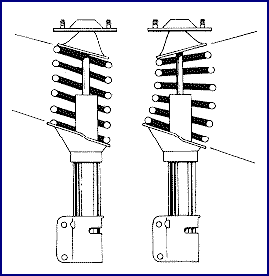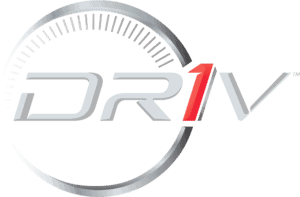STRUT DESIGN
Typically, struts consist of a coil spring to support the vehicle’s weight, a strut housing to provide structural support for the assembly, and a damping unit within the strut housing to control spring and suspension movement.

The bottom of the strut usually attaches to the steering knuckle, and the top of the strut is connected to the vehicle body through an upper strut mount.
With most strut suspensions, the upper strut mount replaces the upper control arm, upper ball joint, control arm pivot shaft, and control arm bushing.
The typical strut mount serves several purposes, including the following:
The flexibility of the mount allows the strut angle to change to follow the travel of the lower ball joint.
The rubber portion of the mount is designed to reduce vibration and transmitted road noise.
A bearing built into some mounts serves as the upper pivot point and forms the steering axis. When the front wheels are turned, the entire strut will pivot from the lower ball joint to the upper strut mount.
The upper strut mount carries the load and transfers that load to the spring and strut housing.
The strut body holds the damping unit and fluid. It is made of heavy gauge steel so that it is rigid enough to provide structural support and withstand road shock.
The piston rod of the strut is much larger in diameter than the piston rod of a typical shock absorber. This is to withstand the side load on the strut shaft. A strut shaft will measure up to 7/8″ in diameter, while the piston rod of a typical shock measures up to 1/2″ diameter.
A coil spring is located between the upper and lower spring seats. It is held there by tension. The lower spring seat is welded to the strut body, while the upper spring seat is kept in place by the upper strut mount.
During strut replacement, some struts require special service procedures. Most vehicle manufacturers use spring seats, which are positioned off centre and at an angle. Always mark the position of the upper spring seat and coil spring in relation to the lower spring seat. If the upper spring seat is installed incorrectly, the spring will bow, creating noise, possible vehicle pull, and premature wear of the strut and upper strut mount.
Struts also have a jounce (or compression) bumper. The purpose of this component is to limit suspension travel by not allowing suspension components to hit together. In some newer model vehicles the jounce/compression bumper is a solid piece between the upper strut mount and the top of the strut. In this case it is working as an auxiliary spring.
If inspection reveals the bumper is cracked, torn or missing, replacement is required. It should be noted that the Monroe replacement unit has a rubber boot included with the jounce bumper to protect the strut piston rod.




